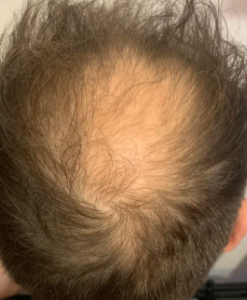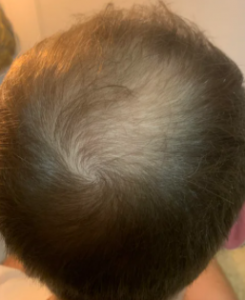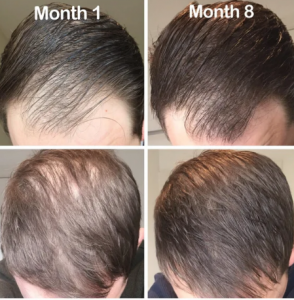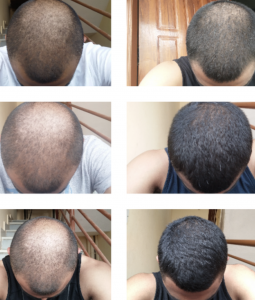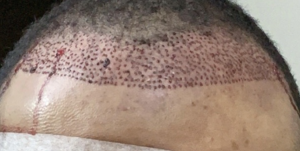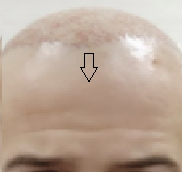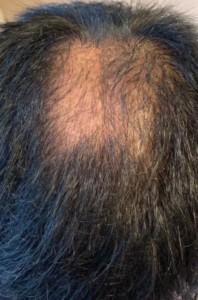http://baldingcelebs.blogspot.com/2010/09/king-of-wigs.html?m=1
Many actors use Wigs to create their character for movies and other activities. IT clearly works for Nicholas Cage as shown in this article.
A Maturing hairline is a natural process and does not reflect any male pattern balding while a receding hairline reflects terminology of a presentation of genetic balding in men. The mature hairline is located in the midline, one finger breadth above the highest crease of the furrowed brow.
Ive been using 5% minox for about a month now along with dermarolling once a week and anti dandruff shampoo. My hairline hasnt improved much but i noticed lots and i mean LOTS of small hairs around the hairline after shower today. I heard hairs shrink before they fall out, the little hairs actually lay flat on my forehead so they mask my slightly receded temples nicely. Are those new hairs or are they about to fall out (i hope they dont because there really is a lot of them)
The best metric for measuring your progress of lack of progress with minoxidil or finasteride is the HAIRCHECK test (see here: https://baldingblog.com/haircheck-test-how-it-is-done-video/) . Hair is too important to take hair loss any way but serious. A man from Reddit came into my office today because he was very worried about the hair loss he saw in the shower. He also was worried about his hairline, so I did a HAIRCHECK test and told him he was not balding at all, and his hairline was just maturing. He smiled as he left the office because I took a weight off of his back.
No. Telogen Effluvium is a temporary problem that resolves over time; however, some people find as they age that their hair gets finer.
I am thinking about getting a hair transplant. Most places that I have consulted with recommend me getting between 1200-1800 grafts. I understand that the more grafts that I get, the higher they are paid. However, I am concerned about a few things. I am concerned how my donor area will look afterwards and I don’t want to lose donor area hair if the doctor did not do a great job. How would I know how many hairs were actually transplanted? I wouldnt mind doing another transplant if the first time was a good job. What percentage of those harvested get transplanted? thanks for advice.
Of course you can request a certain number of grafts, but you want to ask the doctor what makes sense when you take such a step. I believe strongly in a Master Plan as hair loss is a progressive process and the donor supply of permanent hair is limited. I refer to this as a Hair Bank where you can only make withdrawals. You need to find a doctor who believes strongly in a Master Plan, as hair loss is a progressive process and the donor supply of permanent hair is limited. What has to be done is to: (1) predict your short term hair loss pattern, (2) estimate your long term worst-case hair loss pattern and (3) give you quantitative number for how many hairs (grafts) you have in your hair bank. As you make withdrawals, it is a one-way process. I also like to give my patients a plan for surgery and an estimate of what they can expect in terms of result. I spend a lot of time with my patients just in the consultation and then similar amounts of time are spent prior to the surgery. We give hair washes after the surgery to make sure that there is no crusting so that my patients can go out in public immediately after the surgery (see here: https://baldingblog.com/one-day-post-op-with-photo/ and here: https://baldingblog.com/post-op-photos-6-days-after-3320-grafts/) . These patients can go back to work quickly using what hair they have to cover up the surgical recipient sites. We also use a special tape to prevent swelling in the few people that get it.
https://www.oatext.com/Long-term-(10-year)-efficacy-of-finasteride-in-523-Japanese-men-with-androgenetic-alopecia.php
RESULTS: We evaluated the long-term (10-year) efficacy and safety of AGA treatment with 1 mg/day finasteride in a large study population (532 patients), as the first study of this kind in Japan, to our knowledge. A high objective efficacy was demonstrated by the MGPA, which revealed improvement and prevention of disease progression in 99.1% of the 532 Japanese men with AGA treated with 1 mg/day finasteride for 10 years.
SEXUAL FUNCTION: In the investigation in 40 years or older of Asians, the incidences of decreased libido and erectile dysfunction were 6.0–38.7% and 40.6–70.0%, respectively [29,23]. Overall, the adverse reactions were all mild, and the incidence was lower than the generic incidence of decreased libido and erectile dysfunction in Asians. As adverse reactions were recorded by patients in a subjective questionnaire, the result was thought to be slightly different from the correct number of adverse reactions in this study
Dr. Rassman’s Comment: The efficacy of long term finasteride treatment has been published many times. When compared side-by-side with men who did not take finasteride, the results show that men with genetic balding hold on to more hair over time than the non-finasteride counterparts. The issue of sexual dysfunction is briefly discussed and the comment that the sexual side effects of age parallel the sexual side effects while on the drug (just slightly less according to this study). There were no cases of Past-finasteride syndrome reported in this study, a significant point.
.
The hairline belongs about one finger breadth above the highest crease of the furrowed brow. This man will find that his hairline was transplanted unnaturally too high. I believe it belongs about 1 inch lower than the surgeon placed it about where I placed the arrow. In addition, the hairline is lower on the patient’s right side.
Is it true that if I stop using DHT blocking shampoos I will lose hair, even if my hairline may just be matured?
There is no effective DHT blocking shampoo on the market. It is not easy to get a DHT block from a shampoo that you wash off of your head
Do you believe that it stays effective long term? (Say more than two years) Or will it lose effectiveness compared to the oral form? I am 22 years of age and considering taking topical instead of oral. Let me know what you think.
If you are asking me if you continue to apply it for 2 years or more, will it still be effective. The answer is yes!
To those who are just using Minoxidil and micro-needling only. I am just speaking from my own experience but eventually whatever gains you get from the two will not last, at least it didn’t for me. But I have continued to persist with it even though it continued to get worst. I am 39 and now starting on topical finasteride for the first time
I am not surprised that even if you got all of your hair back, once a single hair cycle completed (2-3 years) the balding would have returned to where it is now. If the topical finasteride fails and you want your hair back, a hair transplant is a sure thing for this type of balding.
Over the past 38 years, the sperm count measured at Mt. Sinai Hospital and elsewhere has dropped 58%. Dr. Swan reported this alarming statistic on the BBC. She believes that this change must be due to environmental factor such as plastics and other chemicals which are now in our bodies. In addition to the number of sperm produced per cc of ejaculate, the quality of the sperm is also down as more and more embryos are developing with congenital problems which are now being identified in the offspring of our children. Dr. Swan believes that these changes are probably permanent and correction might take a few generations to correct.

